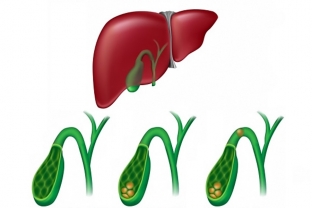Treatment of cholelithiasis is considered to be one of the most topical issues in modern medicine until today. This is due to the fact of the high prevalence of this pathology and many unresolved questions regarding when and by what method it is worth removing the stones formed in the gallbladder. Estet-portal.com wants to share up-to-date information about in which cases of gallstone disease what methods of treatment should be used in order to most effectively eliminate the problem of formation of stones in the gallbladder.
Treatment of cholelithiasis at the preclinical stage
In case of accidental detection of stones in the gallbladder, that is, in the preclinical stage of the disease, the treatment of gallstone disease is aimed primarily at eliminating stagnation of bile in the gallbladder and preventing the subsequent formation of stones. For this purpose, first of all, it is recommended to change the lifestyle. The patient should actively go in for sports, minimize sedentary work, adjust his diet. Diet No. 6 is recommended with a limited amount of fatty, hypercholesterolemic foods. In the diet, it is necessary to increase the content of plant products - raw vegetables and fruits. An important role is played by regular meals by the hour, especially if the patient has an anomaly in the development of the gallbladder. Comorbidities need to be treated
Non-surgical methods of treatment of gallstone disease: medical litholysisIn the second stage of cholelithiasis, that is, in the presence of symptoms of the disease, non-surgical methods of treatment are recommended. An effective method is oral drug litholysis of stones with bile acid preparations, in particular, ursodeoxycholic acid. This method of treatment involves long-term use of drugs for six months to two years. With a properly selected therapeutic regimen, more than 70% of patients experience complete dissolution of stones within 18-24 months. At the same time, 10% of patients may experience a recurrence of stone formation, suggesting a second course of treatment.

Drug treatment of cholelithiasis is an effective, simple and non-invasive method of treating cholelithiasis, but it is suitable for no more than 20% of patients, as it has certain contraindications for use:
- complicated course of gallstone disease;
- disabled gallbladder;
- frequent biliary colic;
- marked obesity;
- pregnancy at any time;
- presence of concomitant diseases;
- pigmented or calcified gallstones;
- stones larger than 1.5 cm;
- calculi occupying more than 50% of the gallbladder cavity.
The gold standard for the treatment of cholelithiasis – cholecystectomy
The surgical method – laparoscopic or open cholecystectomy, which involves the complete removal of the gallbladder along with stones. The method helps not only to remove the formed stones, but also completely prevent their subsequent formation. Surgical treatment of gallstone disease is indicated in the following cases:
- complicated course of gallstone disease;
- frequent relapses of biliary colic;
- non-functioning gallbladder;
- pancreatitis and other gastrointestinal comorbidities;
- suspicion of gallbladder cancer.









Add a comment